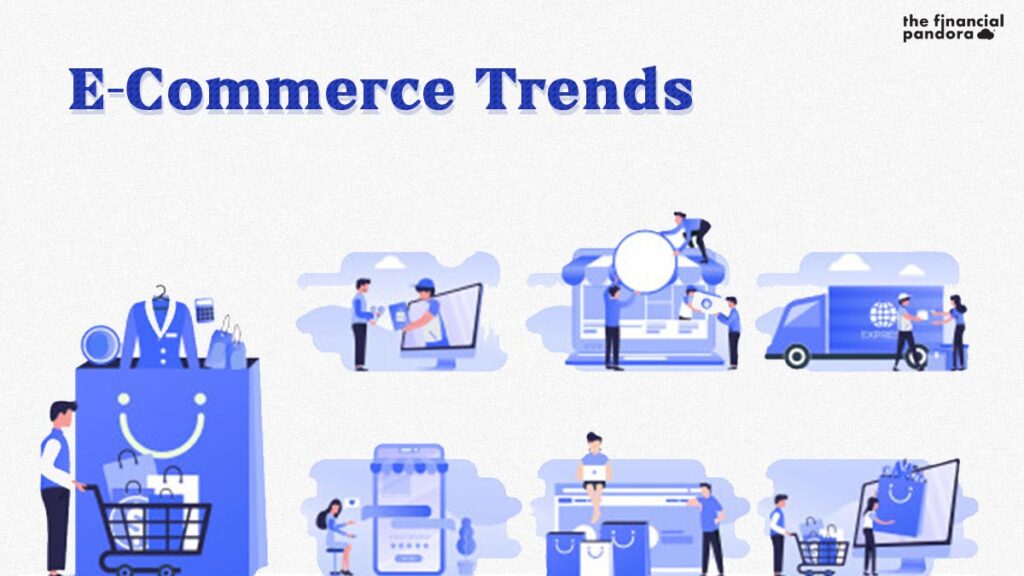The Indian e-commerce sector is one of the fastest-growing sectors of the country with a transformative journey, having progressed even amidst the pandemic and further enlarging the future scope.
According to GlobalData Ecommerce Analytics, the Indian e-commerce market is expected to reach INR 7 trillion by 2023, growing at a CAGR of 19.6% between 2019 and 2023.
The ongoing pandemic has led to a decline in overall consumer spending; however, there is a rise in online spending as consumers use online sales channels from the safety of their homes. Technological advancements across payments, logistics, analytics-driven personalized customer engagement, and digital advertisements boost the sector’s growth.
The main factors involved in promoting the growth of e-commerce are an increase in smartphone penetration leading to higher e-commerce sales in tier 2 and tier 3 cities, rising standards of living, an explosion of social media platforms, favourable demographics such as a higher percentage of working women in the population and a rising number of millennials. From strengthening the Consumer Protection Act to focus on a cashless economy and more robust internet connectivity, the government’s various initiatives are boosters to e-commerce.
Entrepreneurs are leveraging new opportunities to grow by profits and volume in niche markets and focusing on customer-centricity.
Below listed are some trends that will redefine the course of India’s e-commerce growth story.
- Omnichannel Strategy
- Payment Solutions
- Multi-Language Integration
- Technology Adoption
- Rise of the Direct-To-Consumer (D2C) Model
- Government Initiatives
- Make in India
- B2B
- Models
OMNICHANNEL STRATEGY
2021 has seen consumers prioritize safety and convenience even though their preferences and expectations are constantly evolving. As per Deloitte State of the Consumer Tracker, 73% of the Indians are ready to pay more money for convenience. In response to this, e-commerce players have adapted to the new normal and made efforts to create consumer experience consistency across various channels. They’re also focusing on creating personalized experiences to enhance customer retention, satisfaction, and acquisition. Brands have started to fortify their omnichannel strategies by moving towards consumer-centric business models.
With the country still under partial lockdowns and curfew, e-commerce is going omnichannel, with multiple small businesses ramping up their online presence. The adoption of omnichannel strategy has helped organized retailers and online players connect with customers seamlessly through their preferred channels. For new businesses, customer retention is the critical element of this strategy, alongside consistent buying experience.
PAYMENT SOLUTIONS
Payments are essential for every business, and by offering smooth solutions, they will see an upward rise in sales as customers will have numerous payment options available to them, all just a tap away. The pandemic has forced consumers to become tech-savvy and jump into the digital payments bandwagon. The National Payments Corporation India encourages people to reduce cash transactions and opt for digital payments. Cash on Delivery (COD) is the most used payment mode in India and addressing this challenge, digital payment solutions are evolving through the government’s initiative ‘Jan Dhan Yojana.’ Through this scheme, banking facilities have extended, and over 110 million debit cards have been added, increasing electronic payment access for customers. Electronic wallets have also been launched to ease the payment process in e-commerce.
MULTI-LANGUAGE INTEGRATION
The upcoming growth engine will be poised from India’s second-tier cities and beyond, making it essential for e-commerce platforms to provide their available services in a host of languages to gain necessary traction.
TECHNOLOGY ADOPTION
Investing in technology, e-commerce players are catering to the growing number of customers. Cutting-edge technologies like AI/ML, IoT, and big data analytics contribute to better customer services while applying chatbots, image recognition, and recommendation engines. Simultaneously, voice or image-enabled search works well for the local masses who are not fluent in the English language. Businesses have introduced personalized virtual shopping experiences with online consultations, video-based demos, and live interactions to connect with customers and improve the user interface.
The pandemic accelerated the rapid adoption of technology across sectors. Increased internet proliferation, easy access to technology, and rising smartphone usage have allowed a move towards online shopping via social media platforms or mobile commerce, which will help them integrate social commerce as an added sub-channel.
When asked for recommendations, AI can help the customer purchase based on their history, assist on the backend, and help make inventory predictions. Brands can also leverage concepts like voice search to position products in front of customers. Meanwhile, many e-commerce companies are also deploying deep technology, namely Machine learning, the Internet of things, and Virtual reality, to provide improved personalized offerings to customers.
RISE OF THE DIRECT-TO-CONSUMER (D2C) MODEL
D2C is increasing across Indian brands of various categories, be it luxury goods or FMCG. They focus on selling and delivering merchandise directly to consumers without depending on intermediaries such as third-party sellers, wholesalers, distributors, and leveraging online channels. This model also offers businesses multiple opportunities by increasing profit margins, enhancing personalization, and improving digital payment capabilities.
GOVERNMENT INITIATIVES
Embracing e-commerce platforms, the government boosts traditional offline markets through flagship initiatives such as Start-up India, Digital India, Skill India, and Innovation Fund. They have also brought in regulatory reforms like the New Draft E-commerce Policy, the National Retail Policy, and the Consumer Protection Rule 2020 to build this sector. The Indian government is also leveraging digital platforms for agriculture by launching an e-commerce site to link farmers with the state markets to sell agro commodities.
MAKE IN INDIA
2021 is expected to bring in newness and freshness with customers moving their shopping towards local businesses. Even though existing bog brands will deliver the best, consumers now prefer local products, which is seen in their well-informed decisions. Campaigns are ‘Make in India’ and ‘Vocal for Local’ are more than just taglines; now part of the customer’s buying process.
‘Vocal for Local’ is in sync with India’s vision of becoming Aatmanirbhar, while ‘Make in India’ products have raised awareness among consumers, now making a conscious effort to support them. These campaigns have encouraged brands and leverage virtue-signaling online through positive attributions like ‘Locally Sourced.’ Choosing sustainability, this trend will carve a path for the industry’s success soon.
B2B MODELS
B2B e-commerce models enable Indian manufacturers to ensure the availability and affordability of goods by optimizing the supply chain. It has provided benefits through the digital twinning of the supply chain, meaning the entire manufacturing supply chain is virtual. Thereby helping manufacturers to connect to new markets for global trade with the click of the mousse.
SUMMING UP
The E-commerce sector is on a growth trajectory and will pave the way for success with the trends mentioned above. Brands focus on customer interaction throughout the customer journey and will continue leveraging technologies for website and app optimization, customer experience, personalized services, customer relationship management, and warehousing management. India has a substantial retail opportunity, and e-commerce companies are scaling their operations to meet the hyper-growth in the future.
This post was written in collaboration with Asif Yahiya Sukri LLP. Asif Yahiya Sukri LLP provides unparalleled personalized financial services to a broad range of clients across different geographical locations. With a presence in the USA, India and the MENA region, they ensure that all of your financial decisions are made carefully and with your best interests in mind. They are innovators who understand what goes into building companies.
You can also reach out to them on info@aysasia.com
Follow Us @




